And Simeon blessed them, and said to Mary his mother, "Behold, this child is destined for the fall and for the rise of many in Israel, and for a sign that shall be contradicted. And thy own soul a sword shall pierce, that the thoughts of many hearts may be revealed" (Luke 2:34, 35).
Now there were standing by the cross of Jesus his mother and his mother's sister, Mary of Cleophas, and Mary Magdalene (John 19:25).
These citations from St. Luke’s and St. John’s Gospel accounts form the scriptural inspiration for Catholic devotion to the Virgin Mary in sorrow. Members of the early Church contemplated Mary’s grief. St. Basil the Great (329-379), founder of Eastern monasticism, wrote: “If the suffering of the Martyrs could be joined, they wouldn’t be comparable with the suffering of the Virgin Mary… this is why She is the 'Queen of Martyrs.'”
In the Manual Of Devotions In Honour Of Our Lady Of Sorrows (1868, R. Washburne, F.A. Little in London, England) is found this assertion:
Devotion to the Sorrows of our Blessed Lady dates from Calvary. The Apostolic Church clung round her whom Jesus had given to be its Mother, and ever remembered that it was amid the pains, the Blood, and the agonies of the Passion, that it had become the child of Mary — literally “the child of her Sorrows.”
Instigators of the Protestant Revolt of the 1500s eventually turned their backs on the ages-long veneration accorded the Virgin. Despite their indifference, reflection on Mary’s anguish at the violence endured by her Son, with its deep, spiritual roots in Christian belief, continued to bring souls closer to Jesus.
In 1960, my sister Helen was part of a class of 50 young women seeking to become members of the order of the Immaculate Heart of Mary. They entered a two-year-long novitiate to discern their vocations at La Case de Maria, the order’s beautiful, extensive property in Montecito, just five miles south of Santa Barbara. Families were allowed to visit on the first Sunday of each month. Our parents never missed a visit.
I bring this up because, just to the left of the front door, was a very small, walled courtyard containing a series of pictures representing the Seven Sorrows of Mary, it is called the Via Matris — the Way of the Mother — depicting the Seven Sorrows of Mary. It was set up in a circuit for contemplation, a counterpart to the Via Crucis — the “Way of the Cross.” I was 10 years old in 1960, and was impressed with the beauty of the enshrined pictures standing amid this garden of floral beauty.
Helen added that the rosary hanging from the belt around her habit was that of the Seven Dolors and was recited there. She later told me, “I didn’t care to be in the courtyard very long as we often saw snakes up on the walls. They usually were lying on the top stones during the day to absorb the heat.”
St. Anselm (1033-1109), a Benedictine abbot eventually consecrated archbishop of Canterbury, wrote many theological treatises. Due to his erudition, especially found in a famous explanation of the Incarnation, Cur Deus Homo (Why God Became Man), he is honored as a Doctor of the Church. Archbishop Anselm was deeply devoted to contemplating Mary as the Sorrowful Mother. Following his lead, Benedictine monks in England, when Merry England rejoined at being known as “the Virgin’s Dowry,” spread the devotion of Our Lady of Sorrows.
Missionary monks in the Cistercian and Servite orders preached this devotion throughout Europe during the 14th and 15th centuries. Indeed, the Servites consider Our Lady of Sorrows as their patroness. The order commemorated her anguish at the Crucifixion as their patronal feast, called the Compassion of the Blessed Virgin Mary on the Friday before Palm Sunday — the word “compassion” (Latin: cum passio, “in anguish with”) indicating Mary’s intense grief being united to the sufferings of her Son.
In this aspect of the Blessed Virgin’s role in nurturing the followers of her Son when they face obstacles and grief in life, she is called Our Lady of Sorrows (Latin: Beata Maria Virgo Perdolens), Our Lady of Dolors, the Sorrowful Mother or Mother of Sorrows (Latin: Mater Dolorosa), and Our Lady of Piety, Our Lady of the Seven Sorrows or Our Lady of the Seven Dolors.
The Mater Dolorosa is a popular subject in Marian art. The Virgin is portrayed with one or seven swords piercing her heart. Mary is the first disciple to accept the word of God: “I am the handmaid of the Lord, be done unto me” (Luke 1:38). This Hebrew maiden became the woman who knew Jesus most intimately during the first 30 years of His life.
The Seven Sorrows of Mary is a frequent religious theme for Catholic devotion. In common imagery, the Virgin Mary is portrayed in tears, grief etched into her face. The iconography of the lone sword piercing her heart illustrates the prophecy of Simeon in Luke 2:34-35. The seven swords represent all her sorrows found in the Gospel.
Pious Catholics composed prayers and practices in honor of Mary and this title. They include the Chaplet of the Seven Sorrows, the Seven Principal Dolors of the Blessed Virgin — this is a seven-decade Rosary upon which the faithful may ponder Mary’s Gospel hardships — the Novena in Honor of the Seven Sorrows of Mary, and the Via Matris.
The Stabat Mater is a series of stanzas inspired by St. John’s description that Mary was seen courageously “standing” at the foot of the Cross, not swooning as so often seen in art. Its composition is attributed to either the Franciscan friar Jacopone da Todi (ca. 1230–1306), or to Pope Innocent III (1161-1216). It remains an optional Sequence for the Mass of the feast of Our Lady of Sorrows.
Older Catholics may recall it as “At the Cross Her Station Keeping” sung throughout Lent, invariably at the weekly Stations of the Cross devotions, or on Good Friday. This was before it was supplanted by the Protestant-based hymn, “Were You There When They Crucified My Lord.” Let us hope Catholic choir directors are blessed by St. Cecilia, the patroness of church musicians that they will look more deeply into the vast treasury of Catholic hymnology.
The number of sorrows was expanded to five or seven incidents identified as most distressing to the Virgin Mother. In 1692, Pope Innocent XII decreed the celebration of the feast of the Seven Sorrows — sometimes referred to as “the Seven Dolors — of the Blessed Virgin for the third Sunday of September.
In 1714, the feast was transferred to the Friday before Palm Sunday. On Sept. 18, 1814, Pope Pius VII, recently freed from abduction by Napoleon, extended the liturgical feast of the Seven Sorrows to the entire Latin Church, transferring it back to the third Sunday of September. In 1913, Pope St. Pius X, wishing to restore the dignity of Sundays as their own particular holy days, changed the title of the observance to “Our Lady of Sorrows,” fixing its date to Sept. 15, the day following the great Solemnity of the Exaltation of the Holy Cross, where it remains.
My father, DeForeest, was a convert devoted to praying the seven-decade Rosary of the Seven Sorrows. During the many years after my sisters and brothers left home, he and my mother, Valentina, would sit in our living room praying this rosary for their children. At Papa’s funeral, that rosary was given my then-4-year-old son, his grandson, DeForeest, III.
Sean M. Wright, MA, award-winning essayist, Emmy nominee, and Master Catechist for the Archdiocese of Los Angeles, is a parishioner at Our Lady of Perpetual Help in Santa Clarita. he answers comments at Locksley69@aol.com.
Stabat Mater — Optional Sequence for the Feast of Our Lady of Sorrows, Sept. 15
At the cross her station keeping,
Stood the mournful Mother weeping,
Close to Jesus to the last.
Through her heart, his sorrow sharing,
All his bitter anguish bearing,
Now at length the sword had passed.
Oh, how sad and sore distressed
Was that Mother highly blessed
Of the sole begotten One!
Christ above in torment hangs,
She beneath beholds the pangs
Of her dying, glorious Son.
Is there one who would not weep,
‘Whelmed in miseries so deep,
Christ’s dear Mother to behold?
Can the human heart refrain
From partaking in her pain,
In that mother’s pain untold?
Bruised, derided, cursed, defiled,
She beheld her tender Child,
All with bloody scourges rent.
For the sins of his own nation
Saw him hang in desolation
Till his spirit forth he sent.
O sweet Mother! font of love,
Touch my spirit from above,
Make my heart with yours accord.
Make me feel as you have felt;
Make my soul to glow and melt
With the love of Christ, my Lord.
Holy Mother, pierce me through,
In my heart each wound renew
Of my Savior crucified.
Let me share with you his pain,
Who for all our sins was slain,
Who for me in torments died.
Let me mingle tears with you,
Mourning him who mourned for me,
All the days that I may live.
By the cross with you to stay,
There with you to weep and pray,
Is all I ask of you to give.
Virgin of all virgins blest!
Listen to my fond request:
Let me share your grief divine.
Let me to my latest breath,
In my body bear the death
Of that dying Son of yours.
While my body here decays,
May my soul your goodness praise,
Safe in heaven eternally.
The Via Matris
Pope Pius VII was devoted to the Sorrowful Mother. In 1818, having officially set the number of her sorrows as seven, the pope wrote prayerful reflections for each, so that loving Catholics might offer God hearts contrite with remorse and repentance while sharing the Virgin Mother’s sense of foreboding, distress and bereavement:
V. O God, come to my assistance;
R. O Lord, make haste to help me.
V. Glory be to the Father, the Son, and the Holy Spirit:
R. As it was in the beginning, is now, and ever shall be, world without end. Amen.
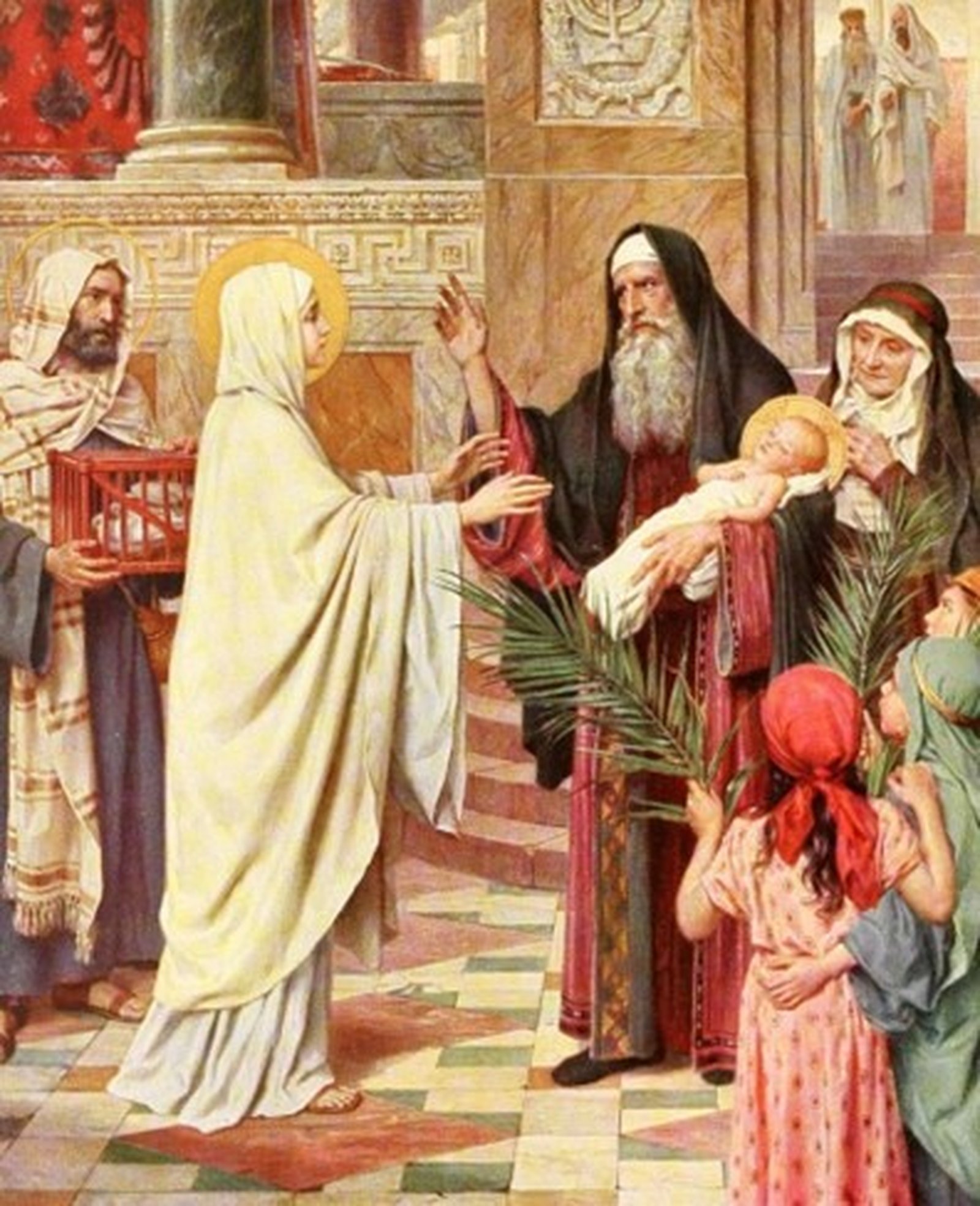
The Prophecy of Simeon
1. I grieve for you, O Mary most sorrowful, in the affliction of your tender heart at the prophecy of the holy and aged Simeon. Dear Mother, by your heart so afflicted, obtain for me the virtue of humility and the gift of the holy fear of God. Hail Mary …

The Flight into Egypt
2. I grieve for you, O Mary most sorrowful, in the anguish of your most affectionate heart during the flight into Egypt and your sojourn there. Dear Mother, by your heart so troubled, obtain for me the virtue of generosity, especially toward the poor, and the gift of piety. Hail Mary…
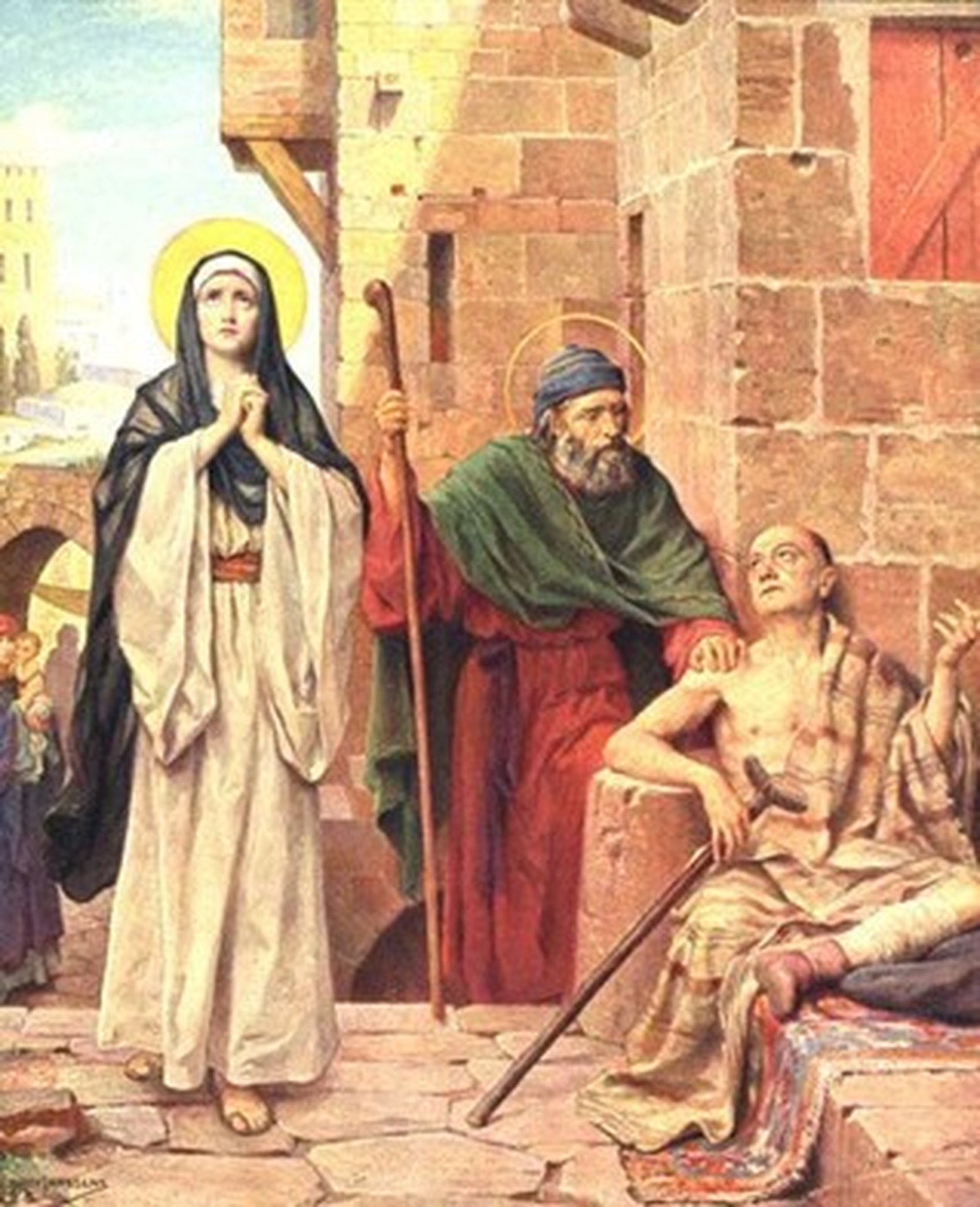
The Loss of Jesus, Her Young Son in Jerusalem
3. I grieve for you, O Mary most sorrowful, in those anxieties which tried your troubled heart at the loss of your dear Jesus. Dear Mother, by your heart so full of anguish, obtain for me the virtue of chastity and the gift of knowledge. Hail Mary…
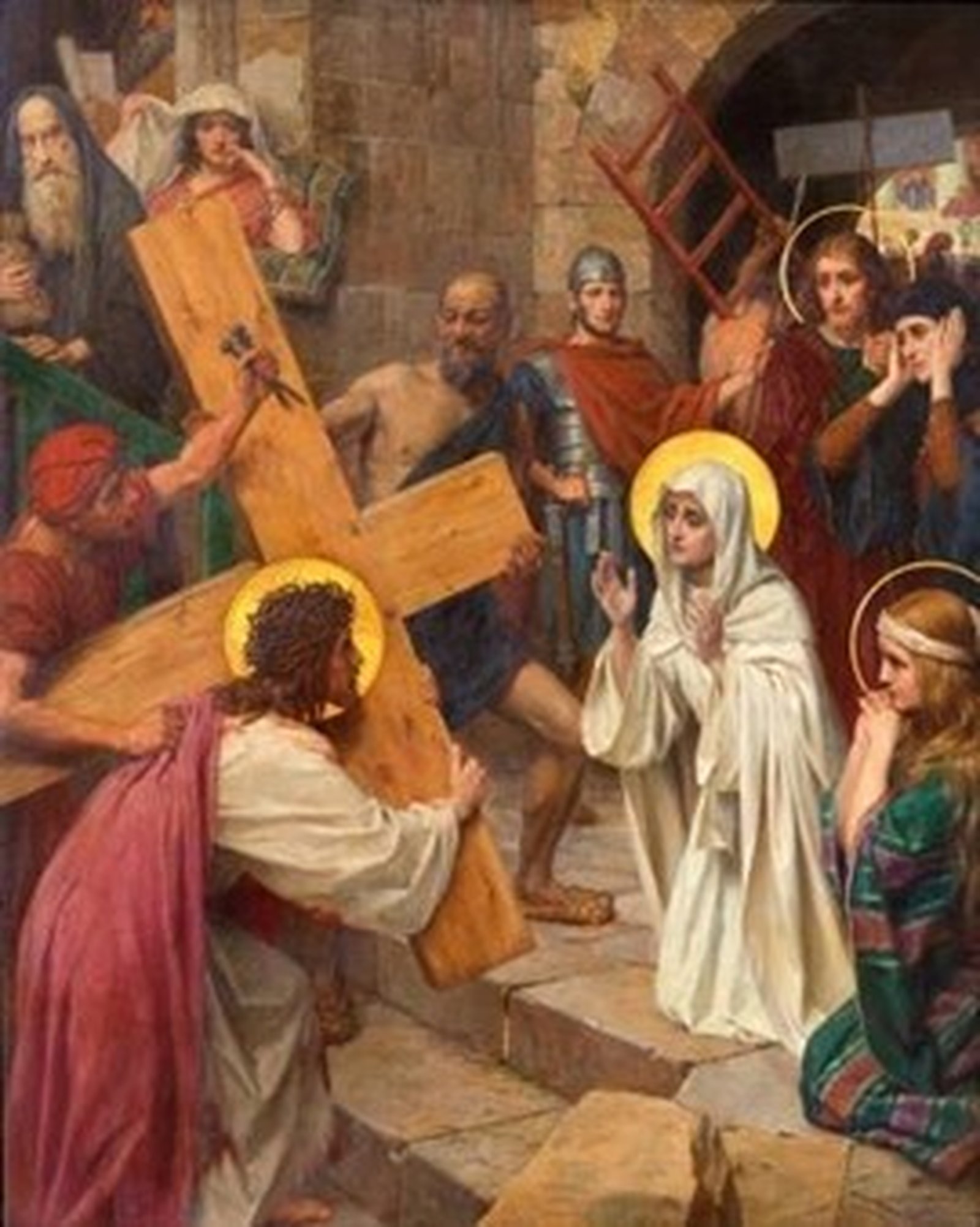
Meeting Jesus, Her Son, on the Road to Calvary
4. I grieve for you, O Mary most sorrowful, in the consternation of your heart at meeting Jesus as He carried His Cross. Dear Mother, by your heart so troubled, obtain for me the virtue of patience and the gift of fortitude. Hail Mary…
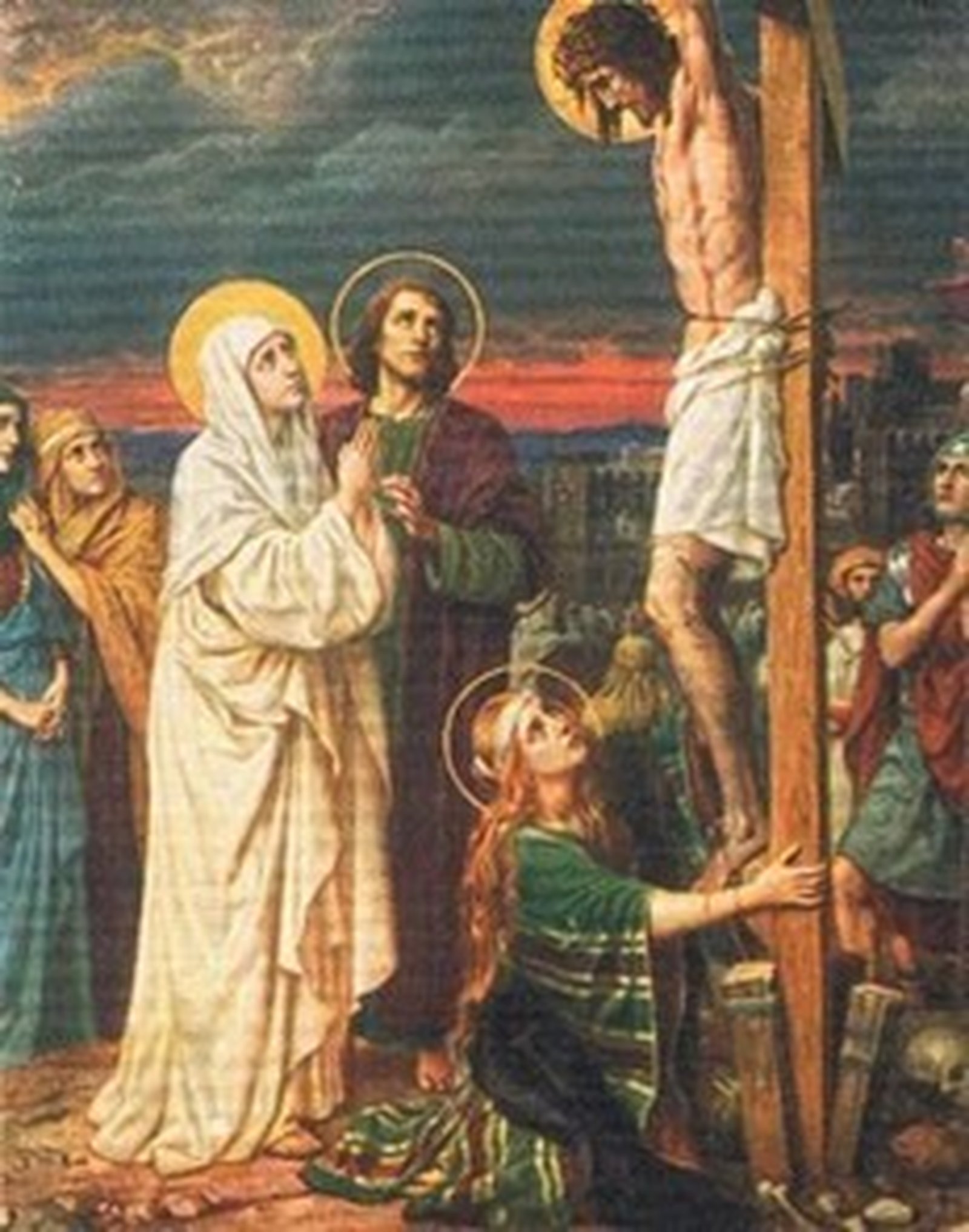
Standing at the Foot of the Cross, Watching Jesus, Her Son Die
5. I grieve for you, O Mary most sorrowful, in the martyrdom which your generous heart endured in standing near Jesus in His agony. Dear Mother, by your afflicted heart obtain for me the virtue of temperance and the gift of counsel. Hail Mary…
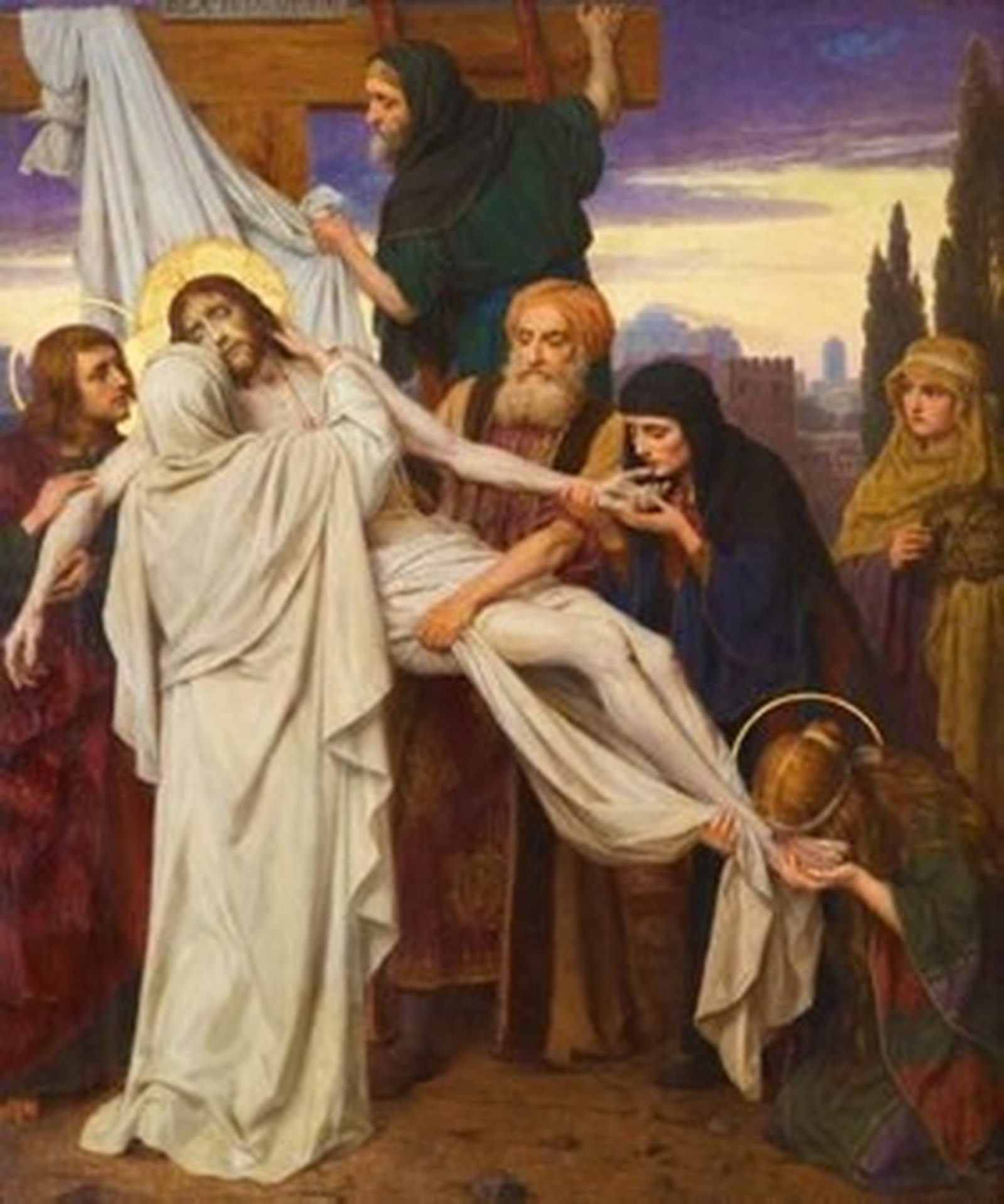
Removing the Body of Jesus, Her Son, from the Cross
6. I grieve for you, O Mary most sorrowful, in the wounding of your compassionate heart, when the side of Jesus was struck by the lance before His Body was removed from the Cross. Dear Mother, by your heart thus transfixed, obtain for me the virtue of fraternal charity and the gift of understanding. Hail Mary…

Being Present at the Burial of the Body of Jesus, Her Son
7. I grieve for you, O Mary most sorrowful, for the pangs that wrenched your most loving heart at the burial of Jesus. Dear Mother, by your heart sunk in the bitterness of desolation, obtain for me the virtue of diligence and the gift of wisdom. Hail Mary…
Let us pray. Let intercession be made for us, we beseech You, O Lord Jesus Christ, now and at the hour of our death, before the throne of Your mercy, by the Blessed Virgin Mary, Your Mother, whose most holy soul was pierced by a sword of sorrow in the hour of Your bitter Passion. Through You, O Jesus Christ, Savior of the world, Who with the Father and the Holy Spirit lives and reigns world without end. Amen.












